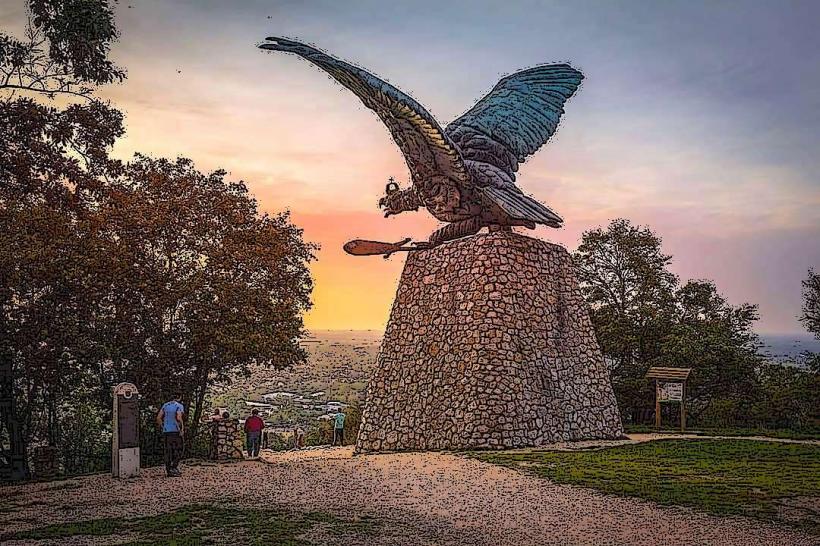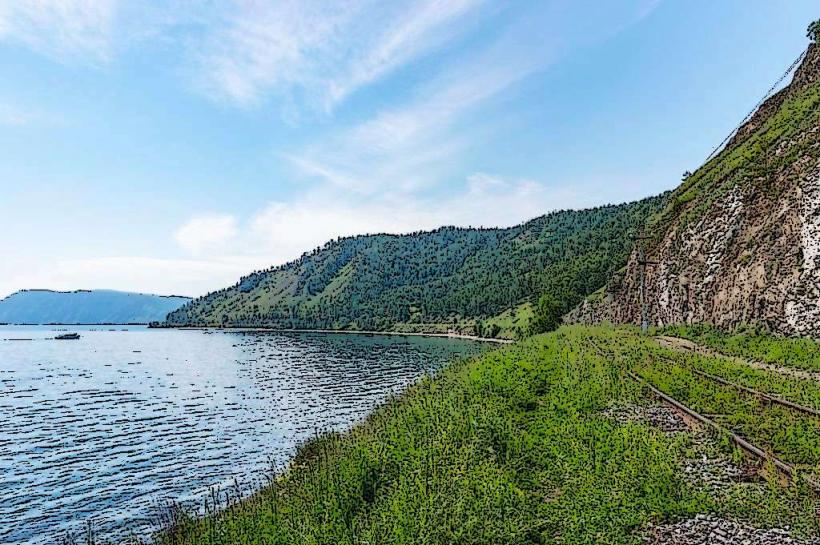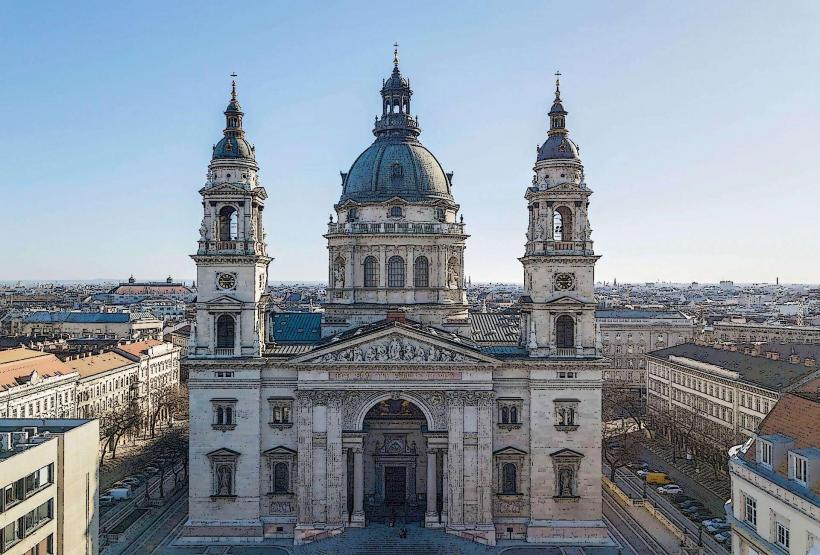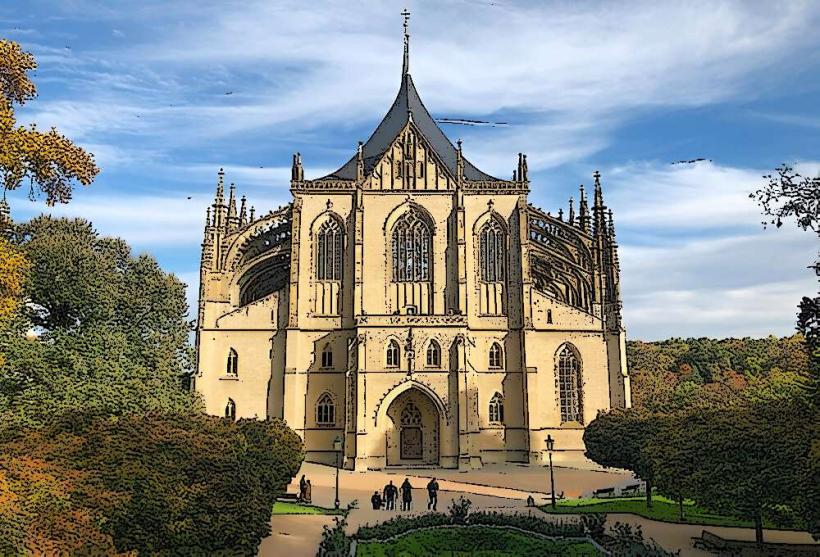Information
City: TatabanyaCountry: Hungary
Continent: Europe
Tatabánya is a city located in Central Hungary, specifically in the Komárom-Esztergom County. It is known for its historical significance, particularly in mining, and for its natural beauty. The city has evolved from a small settlement into an industrial hub and is now a thriving urban center.
History
Tatabánya’s history can be traced back to the Middle Ages, but the city’s significant development began in the 19th century, with the rise of coal mining.
Early History: The area around Tatabánya was settled in ancient times, with evidence of Roman and Medieval activity in the region. It was initially part of the Comitatum of Esztergom.
Industrialization: The city's modern development began with the discovery of coal in the 18th century. The mining industry grew rapidly during the 19th and 20th centuries, leading to the establishment of the modern city of Tatabánya in 1947. At its peak, Tatabánya was one of Hungary’s most important coal-mining centers.
Post-WWII: After World War II, Tatabánya’s industry continued to expand, but the coal mines began to decline by the late 20th century, marking a shift toward modernization and economic diversification.
Modern Era: Today, Tatabánya is an important commercial and cultural center in the region, known for its industrial past, as well as its natural parks and tourist attractions.
Geography
Tatabánya is situated in Central Hungary, roughly 50 km north of Budapest, in the foothills of the Gerecse Mountains, along the Által-ér river. Its location near the capital makes it a significant regional hub for commerce and tourism.
Gerecse Mountains: The surrounding hills offer excellent hiking opportunities and beautiful views of the Tatabánya region. The Gerecse Nature Park is a popular destination for outdoor enthusiasts.
Tatabánya’s Cityscape: The city is located on the edge of the Danube Bend, making it a prime location for both natural and urban exploration. The city has several parks and green spaces, contributing to its scenic appeal.
Cultural and Historical Significance
Tatabánya’s rich cultural history stems from its industrial past, as well as its mining heritage. The city has become a cultural hub in the region, with various museums, festivals, and historical sites.
Key Landmarks:
The Statue of the Turul: One of the most iconic landmarks in Tatabánya, the Turul Bird Statue stands on top of the Kálvária Hill and symbolizes Hungarian heritage. The statue represents the Turul bird, a mythical bird from Hungarian mythology that is often associated with the Hungarian people’s origins. The hill offers panoramic views of the city and surrounding landscapes.
Tatabánya Mining Museum: The Tatabánya Mining Museum is a major attraction dedicated to the city’s coal mining heritage. The museum displays the history of mining in the region, showcasing the tools, equipment, and the lives of the miners who contributed to the city’s growth.
Gerecse Nature Park: The Gerecse Mountains are a popular destination for nature lovers. The Gerecse Nature Park offers numerous trails for hiking, cycling, and birdwatching, as well as historical sites, such as the ruins of Medieval castles.
Kálvária Hill: Another important historical site, Kálvária Hill is home to the Calvary Chapel and offers visitors both religious significance and stunning views of the surrounding cityscape. The hill is particularly known for its peaceful atmosphere and panoramic vistas.
Catholic Church of Tatabánya: The Catholic Church in Tatabánya is an important religious landmark in the city, featuring a neoclassical design and serving as a key place of worship for the city’s Catholic population.
The Donor's House: A cultural venue in the city, the Donor's House (Adományozó Háza) offers a collection of art and historical exhibitions, focusing on local history and culture.
Economy
Tatabánya’s economy has transitioned from mining to a more diverse mix of industry, commerce, and services.
Mining: The city’s historical identity is closely tied to coal mining, and while the mines have largely closed, the mining sector shaped the early growth of the city. The Tatabánya Mining Museum commemorates this industrial past.
Industry: In recent years, the city has shifted toward a more diversified economy, with a focus on manufacturing and technology. Various industries, including automobile production, electronics, and pharmaceuticals, now play an important role in the economy.
Tourism: As the city embraces its natural and cultural assets, tourism has become increasingly important, with visitors attracted to the Gerecse Mountains, the mining museum, and historical landmarks.
Retail and Services: Tatabánya also has a growing retail sector, with shopping malls, restaurants, and entertainment venues catering to both locals and visitors.
Education and Culture
Tatabánya is home to several cultural and educational institutions, which contribute to the city’s vibrant atmosphere.
Tatabánya’s Theatre: The city has its own theater where locals and visitors can enjoy a variety of performances, including drama, comedy, and musical events.
Cultural Centers: There are several community and cultural centers in Tatabánya, which offer events, concerts, and exhibitions celebrating Hungarian culture and heritage.
Educational Institutions: The city has a number of primary and secondary schools, along with institutions of higher learning. The Tatabánya Vocational Training Center offers various programs to help students enter the workforce, particularly in technical fields.
Tourism and Recreation
Tatabánya offers a variety of recreational and leisure activities, ranging from outdoor adventures in the Gerecse Mountains to exploring the city’s historical sites.
Hiking and Nature: The Gerecse Mountains provide numerous hiking trails and outdoor activities, including rock climbing, cycling, and birdwatching. The region is home to diverse wildlife and offers a peaceful escape from urban life.
Water Sports: The nearby Által-ér River provides opportunities for kayaking and fishing, while several parks and green spaces in the city offer places for relaxing and enjoying the outdoors.
Festivals and Events: Tatabánya hosts various local festivals throughout the year, including music festivals, food festivals, and cultural events celebrating the city’s heritage and modern identity.
Cuisine
Tatabánya's cuisine is typical of Hungary, with hearty meals and local specialties.
Pörkölt: A rich Hungarian stew made with meat, often pork or beef, and paprika.
Gulyás: A Hungarian goulash, a flavorful soup made with beef, vegetables, and paprika.
Local Pastries: Hungarian pastries like rétes (strudel) and kürtőskalács (chimney cake) are popular treats in Tatabánya.
Conclusion
Tatabánya is a city that combines a rich industrial history with beautiful natural surroundings. Known for its mining past, it is now transitioning into a modern, diversified hub for commerce, tourism, and culture. The city offers a variety of outdoor activities, historical landmarks, and cultural experiences that make it an attractive destination for both tourists and residents. Its position near the Gerecse Mountains and Danube enhances its appeal, providing visitors with a perfect blend of nature, history, and modern amenities.






